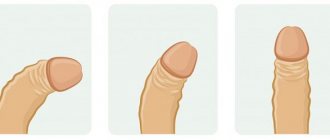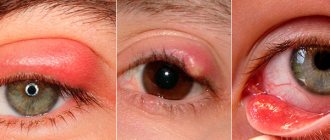| Appointment with a urologist at the clinic. Call a urologist at home. | Reception is strictly by appointment, make an appointment by phone: +7 | Prices for services | Reviews about the clinic |
Often, for no apparent reason, discharge appears on the head in men, which accompanies severe discomfort caused by itching and pain. And these discharges are not always preceded by sexual intercourse.
The cause can be not only sexually transmitted diseases, but also a banal disorder of the body, colds and inflammatory diseases. Another reason may be insufficient hygiene.
Make an appointment with a urologist by phone or by filling out the online form
| Select a clinic | Urological ultrasound | Tests for STIs | Calling a urologist to your home |
Answers to frequently asked questions on the topic of allocation:
- What tests need to be taken for discharge?
- Which doctor should I contact with discharge?
- What discharge is normal?
- What are the treatment methods for discharge?
- When should you see a doctor about discharge?
- Discharge from infectious diseases?
- Discharge on panties, is this normal?
- What causes increased discharge?
- Signs of pathological discharge?
- What diseases cause discharge?
- Do you have discharge after sexual intercourse?
Causes of white plaque
The causes of white plaque on the penis are classified into three groups:
- physiological. Associated with the peculiarities of the secretion of tyson glands located under the foreskin. The problem is aggravated by the lack of proper hygienic care of the genitals;
- non-infectious (endogenous). Caused by disruption of internal organs. Whitish accumulations on the penis are a concomitant symptom of chronic diseases or a sign of activation of opportunistic microorganisms that are part of the natural microflora of the body;
- infectious (exogenous). These are sexually transmitted diseases (STDs).
In the first case, it is enough for a man to get medical advice. To eliminate other causes, proper treatment is required.
Red dots on the head of the penis - what could it be?
Rashes on the head of the penis, as well as on the foreskin, are not the norm. Typically, they are caused by inflammation (balanitis), which is caused by bacteria, fungi or viruses. Here are the most common reasons for the appearance of red dots on the head of the penis:
- Thrush or candidal balanoposthitis This is a fungal infection of the head and inner layer of the foreskin. Small red dots on the head of the penis are only the earliest manifestation, at which stage it is advisable to immediately consult a doctor. Without treatment, weeping erosions with a white coating will form at the site of the spots, the head will swell, itching and burning will appear, and it will become difficult to urinate. If bacteria get into the erosion, the fungal process will be complicated by a purulent one: a yellow-green discharge, pain will appear, and the inguinal lymph nodes will increase. In the future, the purulent process will lead to narrowing of the foreskin and surgical treatment. Timely prescribed antifungal drugs will solve the problem of red spots in the first three days.
- Red dots on the head of the penis, combined with itching and burning, may be the first sign of genital herpes. In their place, within 24 hours, bubbles with transparent contents may appear, which will cause pain and begin to open, become wet and heal without scars. When microbes enter wounds, the process can become purulent and require not only antiviral drugs, but also antibiotics. The lymph nodes in the groin also become swollen and painful. The temperature may rise. Herpetic rashes can spread to the foreskin, skin of the penis, and perianal area. Adequate antiviral and immunostimulating treatment will correct the situation and prevent relapse.
- Damage to the head in gonorrhea can also be represented by red dots. In this case, as a rule, the appearance of dots is accompanied by mucopurulent or purulent discharge from the urethra, which makes urination sharply painful or difficult. The disease can be diagnosed by simple cultures or by the express method, PCR.
- Trichomonas, mycoplasma balanitis This disease can be represented by red dots in combination with spots, edema of the head, swelling of the external opening of the urethra, from which yellowish or gray mucous discharge is observed. Since the symptoms of such balanitis are nonspecific, its nature can be clarified by taking a PCR test for hidden infections.
If the head of your penis is covered with red dots, do not resort to folk methods and self-medication, remember that this is not only about your health, but also the health of your other half and future offspring. Approach the issue responsibly and contact a specialist.
White coating on the penis: when is this normal?
Why might a white coating on the penis be normal? Due to the increased production of a special male secretion - smegma. It is produced by tyson (preputial) glands under the foreskin - a type of exocrine sebaceous glands. Smegma facilitates the sliding of the foreskin when exposing the head of the penis. The secretion mixes with exfoliated epithelial cells, forming a white coating on the head of the penis. The problem is more common in men who have not undergone circumcision. Increased secretion of the preputial glands does not require special treatment. But if the rules of hygiene of the genital organs are not followed, it can lead to inflammation (balanitis, balanoposthitis) and oncopathology.
A white spot appears on the head of the penis
Information about the material Category: Ask the Doctor Published: July 17, 2020
Hello, about a month ago a white spot appeared on the head of my penis. At first it had clear contours and swelling; after a month, the clear contours of the spot almost disappeared and a second spot appeared. 2 weeks ago I visited a urologist, he diagnosed balanoposthitis and prescribed treatment. I doubted the diagnosis and went to a paid dermatovenerologist. He said that it was most likely vitiligo and suggested taking a wait-and-see approach and observing the spot. After taking it, a second spot appeared (at first it looked like a small pimple, but after a couple of days it became about 4 mm in diameter and turned white). Yesterday I went to the KVD to see a dermatovenerologist. The doctor said that it was not an infection and he didn’t know what it was either. The appointment ended with his words - most likely I will send you to a doctor of another specialty. I worry about my health and am embarrassed that doctors do not diagnose or prescribe treatment. But they just say - wait, let’s see what the stain turns into. I don’t know what to do and who to go to for a correct diagnosis. These 2 spots do not hurt, do not itch, are not dense, and do not cause any discomfort except visual. From the photographs and symptoms it looks like lichen sclerosus. I don’t want to wait for the moment when they say - I should have come before, but now there are complications, etc. Please, help me, I don’t know what to do or who to go to. I cannot live peacefully with this disease, not knowing what it is and how to treat it. Waiting for your reply. Thank you in advance for your help.
Jan
Hello Ian. The answer is from a senior researcher at the Institute of Urology and Human Reproductive Health at Sechenov University, Ph.D. Korolev Dmitry Olegovich.
The appearance of spots on the glans penis may be the initial manifestation of a disease such as lichen sclerosus (or lichen).
Lichen sclerosus is a chronic inflammatory disease of the genital skin that leads to chronic inflammation of the glans penis and foreskin. The causes of this disease are not completely clear. But without treatment, it leads to scarring of the genitals, which can cause narrowing of the foreskin and lead to phimosis. Sometimes more severe complications occur - urinary disorders due to narrowing of the external opening of the urethra and part of the opening of the urethra. Impaired urine outflow, in turn, is fraught with complications such as pyelonephritis, cystitis, hydronephrosis (enlargement of the renal cavity system) and urolithiasis. At the first stage of the disease, inflammation spreads only to the foreskin. On the second, whitish, sometimes brown, sclerotic “rings” pass from the foreskin to the skin of the glans penis. The third stage of the disease is characterized by the involvement in the inflammatory process of not only the foreskin and glans penis, but also the external opening of the urethra. The fourth stage of the disease is a large inflammatory process that can degenerate into a precancerous condition and penile cancer.
Diagnosis of this disease consists of examining the penis and palpating it. A definitive diagnosis can be made by biopsy.
You can sign up for a consultation either with me or with the head of the department, prof. Enikeev Mikhail Elikovich. Official visiting hours are Fridays from 9 a.m. to 2 p.m. I also provide consultations on Sundays from 1 p.m. to 2 p.m. We operate on other weekdays, so long waits are possible. It is also possible to make an appointment with the doctors of our diagnostic and treatment department Inoyatov Zh.S., Snurnitsina O.V. and Taratkin M.S. They will answer all your questions and conduct an initial diagnosis, and then transfer the data to us for decision-making. If you live far from Moscow, you can get our video consultation by submitting an application in advance on our website. Phone +7(495)2013995 or online on the website. Call on weekdays during business hours. Good luck to you.
- Back
- Forward
White plaque on the penis: possible diseases
White plaque on the penis accompanies balanitis, provoked by an exacerbation of psoriasis. Skin pathology has no clear cause and is considered irreversible. When relapsed, psoriatic plaques can affect the genitals, causing inflammation.
White plaque on the penis and itching of the genitals are not uncommon with diabetes. The disease is characterized by metabolic disorders, failure of the production of the hormone insulin or insulin resistance. A diabetic's urine contains glucose, which irritates the head of the penis when urinating. As a result, balanoposthitis develops.
Curdled discharge on the penis occurs due to candidiasis (thrush) of non-infectious origin - increased activity of fungi of the genus Candida. Disturbance of microflora balance occurs against the background of:
- weakened immune status;
- prolonged psycho-emotional overload;
- incorrect antibiotic therapy;
- intoxication (including alcohol);
- systematic contact of the genitals with synthetic fabrics;
- unbalanced diet;
- failure of metabolic processes.
Candidiasis is transmitted sexually if a woman has progressive thrush.
A separate category consists of sexually transmitted diseases. Infection occurs through unprotected intimate contact with an infected partner. Redness of the penis and a white coating are among the symptoms of most sexually transmitted infections.
STDs and pathogens
| bacteria | |
| syphilis | treponema pallidum |
| gardnerellosis (in men) | gardnerella |
| gonorrhea | gonococci |
| ureplasmosis | ureplasma |
| viruses | |
| papillomatosis | human papillomavirus |
| cytomegalovirus infection (CMVI) | cytomegalovirus |
| genital herpes | herpes virus type 2 |
| prokaryotes | |
| mycoplasmosis | mycoplasma |
| protozoan parasites | |
| chlamydia | chlamydia |
| trichomoniasis | trichomonas |
Classification of white spots on the genitals
White spots, dots and bumps on the genitals of men can be of several types. They appear in the form of dots, papules, wen, tubercles, blisters. Thus, we can distinguish several types that are most often diagnosed:
- papules (small bumps of a fairly dense structure. Formed from the sebaceous glands or hair follicle. In some cases, these can be lipomas - benign neoplasms);
- dots and spots (have a smooth surface, most often white. Formed against the background of vitiligo - autoimmune pathologies in which localized areas of the skin lose their pigmentation);
- ulcers (appear due to the presence of a bacterial infection in the body. Ulcerative growths on the penis are the main symptom of gonorrhea, syphilis, balanitis, which appear due to insufficient hygiene against the background of these diseases);
- erosion (plaques and tubercles occur due to the human papillomavirus and herpes. The first disease requires mandatory treatment, since some forms of the disease can cause oncology).
Diagnosis and treatment
Treatment of diseases of the male reproductive system, including treatment of STDs, is the responsibility of urologists and andrologists. In case of an infectious lesion, therapy is prescribed by a venereologist. The cause of plaque on the penis is diagnosed based on the results:
- visual medical examination;
- studying the patient's premorbid background;
- laboratory tests: OCA and blood biochemistry, urethral smear, urine test;
- ultrasound examination of the pelvic organs.
Based on the results of the examination, the doctor chooses treatment tactics, determines medications, dosage and duration of the therapeutic course. For bacterial, prokaryotic, and parasitic infections, antibiotics are prescribed. Candidiasis is treated with antimycotics in tablets and ointments. For diabetes and psoriasis, basic treatment and diet therapy are adjusted.
Preventive measures help prevent unpleasant manifestations - careful genital hygiene, barrier contraception, strengthening the immune system and following the recommendations of the attending physician (for chronic diseases). An important point is a timely visit to a urologist, both in the event of symptomatic complaints and for prevention.
Redness on the glans, glans in men, boys and itching of the foreskin
If you notice severe redness on the glans , slight redness of the glans in men and boys, incomprehensible redness of the head of the penis , noticeable redness of the head of the penis, redness on the glans and itching of the foreskin, redness around the head of the skin of the head of the penis, redness on the head of the penis, near the glans, under the head, on the head of a child boy, child, redness of the tip of the head after sex, white coating, slight redness, flaking of the head, under the head of the penis, around the head of the penis, edge of the head, skin, redness and dryness, rash, itching, burning, call doctor so that he can prescribe effective treatment.
There are contraindications. Specialist consultation is required.
Photo: Shmeljov | Dreamstime.com\Dreamstock.ru. The people depicted in the photo are models, do not suffer from the diseases described and/or all similarities are excluded.
Related posts:
Balanitis, treatment of balanitis in Saratov, how to treat balanitis
Epididymitis, acute, chronic: treatment, how to treat inflammation of the epididymis, pain in the testicles
Treatment of the prostate in men in Saratov, Russia: prostate gland, prostatitis, adenoma
Postitis: treatment, inflammation of the penis, how to treat postitis, itching on the head, burning of the head, pain, redness
Urethritis, treatment of urethritis, inflammation of the urethra









